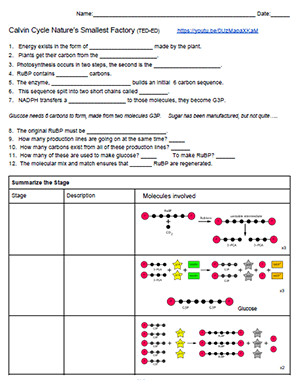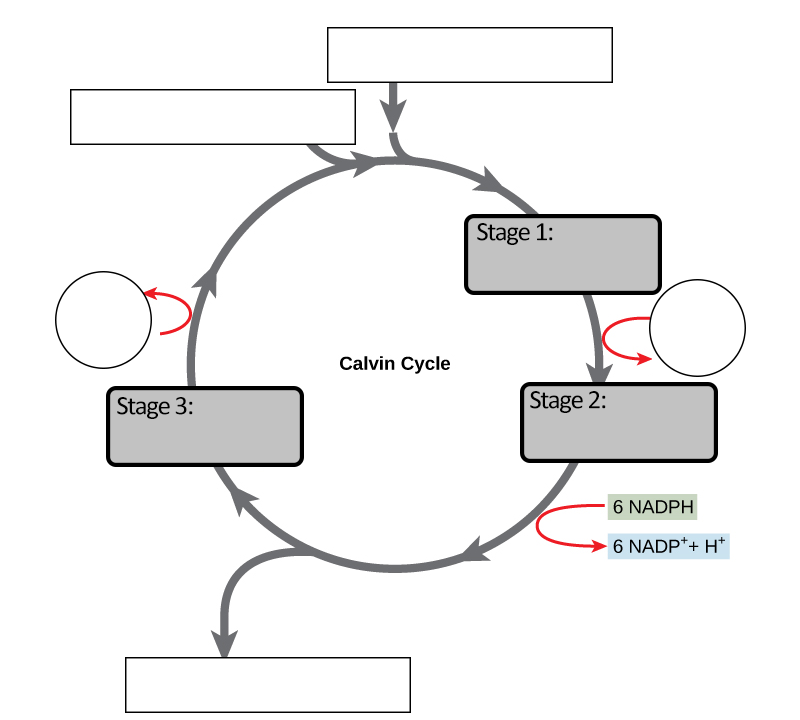
I created this activity for my AP Biology students on a day that I had to be out of the classroom. The activity uses a TED-ED video on the Calvin Cycle that explains how the cycle works to create glucose and to regenerate RuBP.
The TED video goes into specific details about how RuBP used in the process of creating glucose from molecules of carbon. This process is the second part of photosynthesis, the light-independent reaction. In the light dependent reaction, water is split and energy molecules, ATP and NADPH, are shuffled into the calvin cycle. The outcome of the cycle is a molecule of glucose. Also, oxygen, though it is released during the light dependent reaction.
The video is fast and complicated, so I suggested that the video be slowed down so students could write the answers and understand what is happening. Youtube has a feature available to slow down (or speed up) videos and to add close captioning. My students who did well on the photosynthesis test said that they watched the video several times.
The handout also includes a chart that has the three phases of the Calvin Cycle: carbon fixation, reduction, and then regeneration of RuBP. The chart requires students to summarize the events of each stage. Graphics include outputs like ATP, NADH, G3P, and other molecules
Finally, students label diagram showing the stages of the Calvin cycle.
HS-LS2-5 Develop a model to illustrate the role of photosynthesis and cellular respiration in the cycling of carbon among the biosphere, atmosphere, hydrosphere, and geosphere


